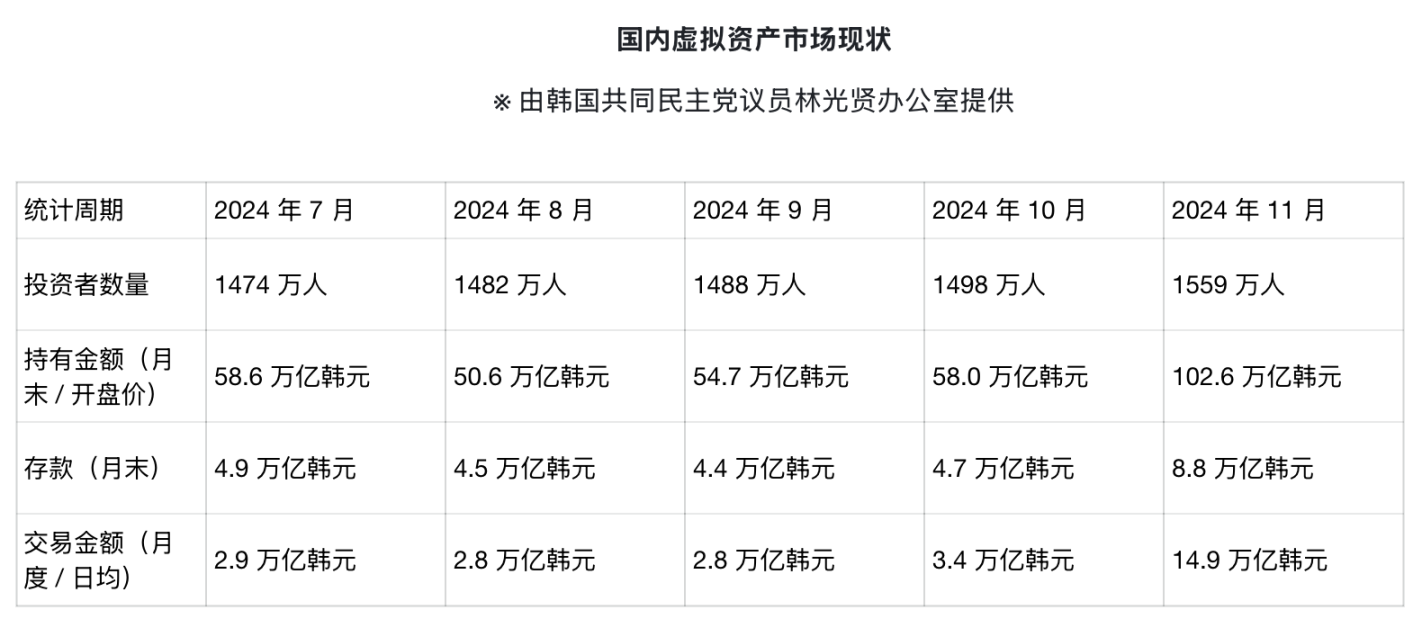From Political Changes to Monetary Breakthrough: How South Korea's New Crypto Policies Could Reshape the Global Digital Asset Landscape
Original Title: "Unveiling the Underlying Logic of South Korea's Stablecoin Wave"
Written by: Thejaswini M A
Compiled by: Saoirse, Foresight News
On that bizarre night in December 2024, former President Yun Suk-yeol declared martial law, deployed troops to the National Assembly, and even attempted military action against North Korea. He probably never imagined that this political suicide farce would give birth to one of the most radical cryptocurrency policy agendas in the world.
And that's exactly what happened.
This two-hour failed coup ended in impeachment, creating a power vacuum. Filling this void was former Gyeonggi Province Governor Lee Jae-myung, known as the "disruptor." With a unified government team and a clear mandate, the Lee Jae-myung administration introduced the "Digital Asset Basic Act" within days of taking office and began dismantling the eight-year-old corporate cryptocurrency restrictions.
Before delving deeper, it's important to note something about South Korea: it's a technologically advanced economy with widespread public awareness of cryptocurrencies, yet it faces structural economic challenges that traditional monetary policies struggle to solve. Cryptocurrencies offer both a solution to current economic pressures and a foundation for building long-term competitive advantages.
Currently, the number of people holding cryptocurrency accounts in South Korea has reached 16 million, surpassing the 14.1 million stock investors in the country. This marks the first time in South Korea's history that retail participation in digital assets has exceeded that in traditional stocks.
Nearly one-third of South Korea's population engages in cryptocurrency trading, with the proportion exceeding half among adults under 60. About 20% of government officials have disclosed cryptocurrency holdings totaling approximately $9.8 million. According to a report by Hana Financial Research Institute, 27% of South Koreans aged 20 to 50 hold cryptocurrencies, with digital assets accounting for 14% of their financial portfolios.
This is the result of years of increasing cryptocurrency adoption, driven by economic pressures, public familiarity with technology, and the political system's eventual choice to embrace rather than resist this change.

@yna
Economic Foundations
South Korea's embrace of cryptocurrencies stems from real economic pressures that traditional policy tools have failed to address. The country's GDP growth forecast for 2025 is a mere 0.8%, a figure typically seen only during major financial crises. In March 2025, youth unemployment rose to 7.5%, the highest for the same period since 2021.
South Korea's national debt-to-GDP ratio is approaching 47%-48%, having risen post-pandemic and now stabilized. By the end of 2024, the country's household debt-to-GDP ratio reached 90%-94%, among the highest globally and topping the list among major developed economies and Asian nations. This contrasts sharply with other major economies where government debt often exceeds household debt. In the U.S., household debt accounts for 69.2%, while government debt is 128%; in Japan, government debt is a staggering 248%, with household debt at just 65.1%. South Korea's inverted debt structure creates unique economic pressures: policy decisions are more driven by personal financial stress than sovereign fiscal concerns.
When interest rates rise and economic growth stagnates, this debt burden drags on consumer spending, a problem monetary policy alone cannot solve.
For millions of young South Koreans, cryptocurrencies represent what researcher Eli Ilha Yune calls "financial desperation." This isn't ideological support for blockchain technology but a pragmatic response to an economy with few other wealth-creation avenues. Traditional investments like stocks offer meager returns, real estate is unaffordable, and the long-term sustainability of the national pension system is in question.
This context explains why South Korea's cryptocurrency adoption differs from other markets. Western investors typically view cryptocurrencies as a means of portfolio diversification or speculative bets on technology, while South Korean investors see them as essential financial infrastructure. The government's cryptocurrency policies are a response to the widespread adoption of cryptocurrencies.
The Lee Jae-myung administration's cryptocurrency agenda aims to prevent South Korean wealth from flowing overseas through dollar-denominated digital assets. Currently, South Korean investors primarily choose USDT or USDC when buying stablecoins, effectively channeling capital into U.S.-controlled financial infrastructure.
In the first quarter of 2025, South Korean cryptocurrency exchanges transferred approximately 56.8 trillion won (about $40.6 billion) in digital assets overseas, with stablecoins accounting for 26.87 trillion won (about $19.1 billion), nearly 47.3% of all outflows.
Interestingly, this capital outflow occurred while the won was strengthening against the dollar. In 2025, the won appreciated about 6.5% against the dollar, with the exchange rate stabilizing between 1,393-1,396 won per dollar by July. This suggests South Korean investors' preference for dollar stablecoins isn't due to a weak local currency but the lack of won-denominated alternatives and the global dominance of dollar-based cryptocurrency infrastructure.
The "Digital Asset Basic Act" establishes a regulatory framework for South Korean companies to issue won-pegged stablecoins. The capital requirement is set at 500 million won (about $370,000) to enter the stablecoin market, a low threshold designed to encourage domestic competition while maintaining basic standards.
Can this won stablecoin strategy really stem capital outflows? If South Koreans want to hold dollar assets, they can still exchange won for USDC. Thus, the strategy's true aim is to reduce demand for foreign stablecoins by offering similar advantages (programmability, DeFi access, 24/7 trading) without currency conversion. More importantly, it keeps financial infrastructure domestic, with fees and custody services flowing to South Korean institutions rather than Circle or Tether. This is behavioral guidance, not capital control, making won-denominated options more convenient while keeping financial operations under South Korean oversight.
Eight major South Korean banks are collaborating to develop won-pegged stablecoins, targeting a late 2025 or early 2026 launch. The alliance includes KB Kookmin Bank, Shinhan Bank, Woori Bank, NH Nonghyup Bank, Korea Development Bank, Suhyup Bank, K Bank, and IM Bank. Their goal isn't just to compete with USDT and USDC but to build financial infrastructure that keeps South Korean economic activity within the domestic system.
This stablecoin strategy reflects broader concerns about dollar dominance in digital finance. Currently, 99% of global stablecoins are dollar-pegged, giving U.S. financial institutions and regulators outsized influence over digital asset infrastructure.
South Korean banks have expressed concerns about privately issued stablecoins, warning they could "severely undermine the effectiveness of monetary policy and pose systemic risks." This disagreement led to the suspension of the central bank digital currency (CBDC) project in June 2025, as officials questioned the need for a state-operated CBDC when private alternatives might perform similar functions more efficiently.
Institutional Transformation
In 2017, citing concerns over speculation and money laundering, South Korea imposed restrictions banning businesses, institutions, and financial companies from opening cryptocurrency exchange accounts. Only individuals could trade cryptocurrencies using verified real-name accounts. Institutional and corporate accounts were prohibited, and banks faced strict compliance obligations. The current administration has begun phasing out these restrictions.
In the initial phase (mid-2025), non-profits and some public institutions are now allowed to liquidate cryptocurrencies obtained through donations or seizures, provided they meet strict compliance requirements, such as using verified won real-name exchange accounts and establishing internal review committees.
By late 2025, the government will expand cryptocurrency exchange account eligibility to about 3,500 listed companies and professional institutional investors through pilot programs. These accounts must be real-name verified and comply with strict AML and KYC protocols. Financial authorities have announced that listed companies will eventually be allowed to engage directly in cryptocurrency trading, driving large-scale adoption at the corporate level.
Major domestic exchanges have launched or upgraded "institutional-grade" products, custody solutions, and support services to meet potential demand from large enterprises and professional investors.
Currently, traditional financial institutions like banks, asset managers, and brokers remain excluded from direct cryptocurrency trading. This setup ensures the first wave of institutional cryptocurrency activity in South Korea will be led by non-financial companies, potentially giving them a competitive edge when regulatory gates open further.
Political Recognition
Lee Jae-myung's cryptocurrency agenda has garnered broad political support, not limited to his Democratic Party. In recent campaigns, both major parties pledged to legalize cryptocurrency ETFs, a rare moment of bipartisan consensus in South Korean politics. The Financial Services Commission, previously opposed to discussing cryptocurrency ETFs, has now submitted a roadmap to approve spot Bitcoin and Ethereum ETFs by late 2025.
This political shift reflects cryptocurrencies becoming a significant voter issue. With over 16 million cryptocurrency holders—about one-third of South Korea's population—digital asset policies have evolved from niche technical matters to mainstream political topics.
The government is also taking broader measures to support cryptocurrency businesses. The Ministry of SMEs and Startups announced plans to lift restrictions preventing cryptocurrency companies from qualifying as venture enterprises, granting them significant tax benefits, including a 50% corporate tax reduction for five years and a 75% reduction in real estate acquisition tax.
South Korean investors have responded enthusiastically to these policy developments. Bank stocks surged after stablecoin trademark applications were filed. Kakao Bank's shares rose 19.3% the day after submitting a cryptocurrency-related trademark application, while KB Financial Group's shares rose 13.38% after a similar filing.
More strikingly, in June 2025, South Korean retail investors poured nearly $450 million into Circle Group stock, making it the most sought-after overseas stock that month. Since its June listing, Circle's stock price has surged over 500%, as South Korean investors see it as a bellwether for global stablecoin adoption.
This investment pattern reflects a deep understanding of how South Korea's stablecoin policies could drive global demand for stablecoin infrastructure. South Korean investors are positioning themselves for the country's potential influence on the global digital asset market.
Lee Jae-myung's cryptocurrency strategy faces significant external pressures. U.S. President Donald Trump has threatened reciprocal tariffs as high as 50%, which could severely impact South Korea's export-dependent economy. With exports accounting for 40% of GDP, trade disruptions could trigger a recession, limiting funds available for cryptocurrency investments regardless of regulatory improvements.
The urgency creates a race between policy implementation and economic deterioration. South Korean authorities are rushing to build cryptocurrency infrastructure before potential trade conflicts make the economic environment too harsh for new investment initiatives.
Domestically, the central bank's opposition to private stablecoins could lead to ongoing regulatory tensions. South Korean bank officials prefer stablecoin issuance under banking supervision rather than allowing tech companies into monetary infrastructure.
Tax policies remain undecided. Plans to impose a 20% capital gains tax on cryptocurrency profits exceeding 2.5 million won annually have been delayed multiple times but are still slated for implementation. How this tax interacts with new corporate cryptocurrency access rules will influence institutional adoption patterns.
South Korea's cryptocurrency policies are being closely watched internationally, potentially serving as a model for other countries facing similar economic pressures and technology adoption patterns. The combination of regulatory clarity, institutional access, and domestic stablecoin infrastructure forms a comprehensive approach to digital asset integration.
If successful, the South Korean model could influence policy-making in other Asian economies and provide a template for countries seeking to embrace digital asset innovation while maintaining monetary sovereignty.
[Disclaimer] The market is risky, and investment should be cautious. This article does not constitute investment advice. Users should consider whether any opinions, views, or conclusions in this article suit their specific circumstances. Investments made accordingly are at the investor's own risk.
Original Link

